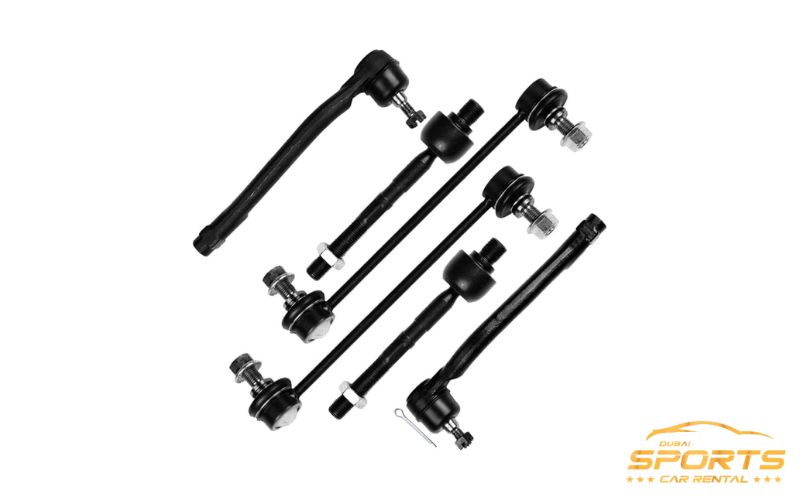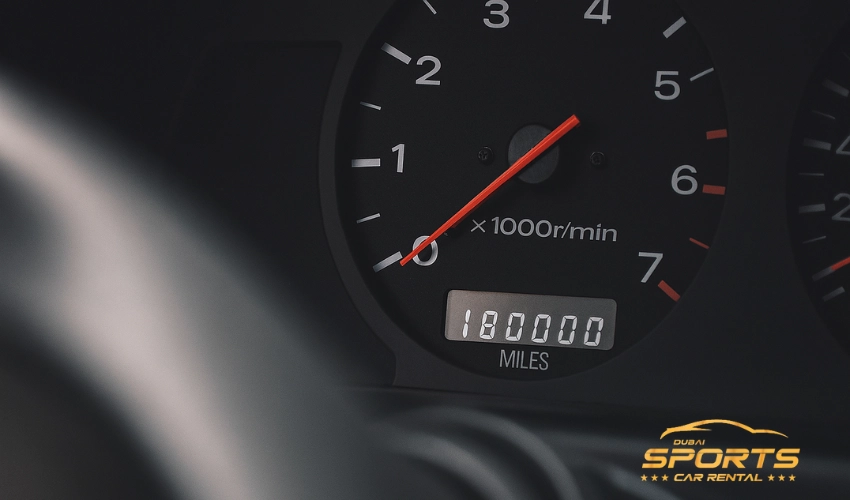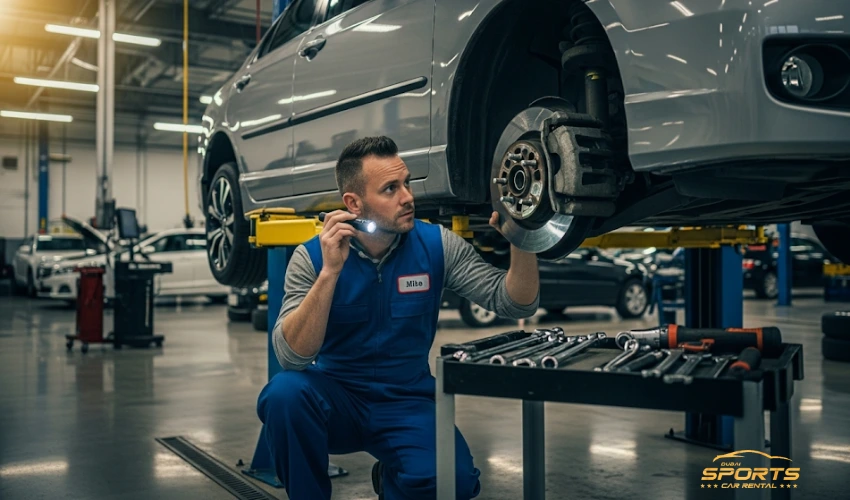The Anatomy of Tie Rods
Tie rods are slender, high-strength steel components with two main sections: the inner tie rod and the outer tie rod (also called the tie rod end). Each front wheel requires this pair of tie rods to function properly.
According to a research paper about tie rods published by Sage Journals, inner tie rods connect directly to your steering rack or steering gear and are typically protected by rubber boots that shield them from debris and moisture. These components remain relatively hidden within the steering mechanism.
Outer tie rods (tie rod ends) connect to the steering knuckle near your wheel. They are more exposed to road conditions and, therefore, often wear out faster than their inner counterparts. Both sections feature ball joints that allow for flexibility as your suspension moves up and down while still maintaining steering control. This ingenious design allows your wheels to turn while simultaneously absorbing road impacts.
How Tie Rods Function in Your Steering System?
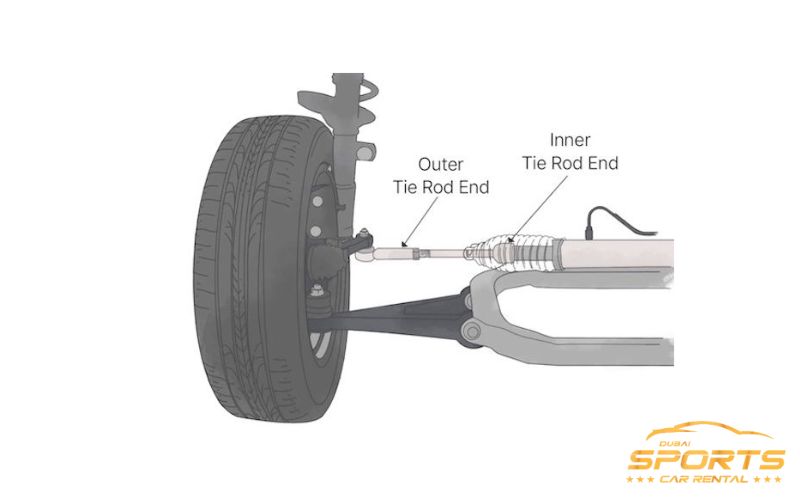
When you turn your steering wheel, a remarkable chain of events occurs:
- Your steering gear or rack moves in response to the steering wheel rotation
- This movement pushes or pulls the tie rods
- The tie rods transfer this force to the steering knuckles
- The knuckles pivot, causing your wheels to turn
Tie rods serve as the critical pivot point between your steering system and your wheels. Without functioning tie rods, your car simply could not steer, so they are that essential. Different vehicles use various steering systems (primarily rack-and-pinion or recirculating ball systems), but all rely on tie rods to connect the steering components to the wheels.
Why Tie Rods Matter?
Tie rods do more than just enable turning. They contribute significantly to your vehicle’s:
- Safety and control: They ensure predictable steering response, keeping you in command of your vehicle’s direction.
- Wheel alignment: The adjustable nature of tie rods allows mechanics to fine-tune your wheels’ toe angle (the direction they point relative to each other), which affects handling characteristics and tire wear.
- Ride comfort: By absorbing some road vibrations before they reach the steering wheel, they contribute to a smoother driving experience.
- Tire longevity: Properly functioning tie rods help maintain correct wheel alignment, preventing premature and uneven tire wear that could cost you hundreds in replacement tires.
Warning Signs of Failing Tie Rods
Your tie rods communicate their deteriorating condition through several distinct symptoms:
- Steering wheel play: If you can turn your steering wheel several inches before your wheels respond, your tie rods may be worn. This “free play” creates a disconnected feeling between your inputs and the car’s response.
- Unusual noises: Clunking, knocking, or popping sounds when turning or driving over bumps often indicate loose tie rod joints.
- Steering wheel vibration: A shaking steering wheel, especially at higher speeds, can signal tie rod problems as the wheels develop a slight wobble.
- Uneven tire wear: Examine your front tires’ edges—if one side is wearing faster than the other, your tie rods may be allowing improper wheel alignment.
- Wandering steering: If your vehicle drifts or pulls to one side without steering input, worn tie rods might be the culprit.
Maintaining Your Tie Rods for Longevity
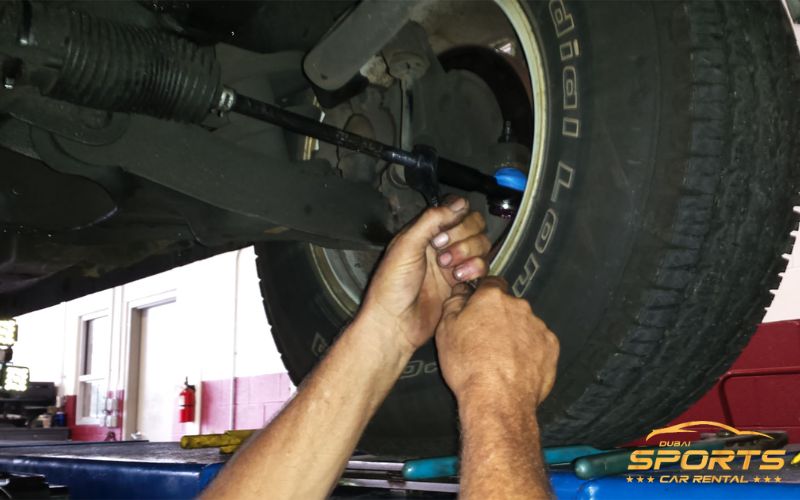
Unlike more complex vehicle systems, tie rod maintenance is relatively straightforward but often overlooked:
- Regular inspections: Have your tie rods visually checked during routine maintenance visits; a quick examination can catch early signs of wear. That way, you can prevent these signs from getting dangerous.
- Driving habits matter: Aggressive driving, particularly hitting potholes at speed or striking curbs, can damage tie rods prematurely. Developing smoother driving habits protects not just your tie rods but your entire suspension system.
- Undercarriage cleaning: If you drive in areas with road salt or harsh chemicals, regularly washing your car’s undercarriage helps prevent corrosion that can weaken tie rods.
- Alignment checks: After hitting significant potholes or curbs, having your alignment checked can identify potential tie rod issues before they worsen.
Also Read: What is a Knock Sensor on a Car
How Long Should Tie Rods Last?
Most tie rods last between 80,000 and 100,000 miles under normal driving conditions. However, this varies significantly based on:
- Road conditions in your area (rough roads accelerate wear)
- Driving style (aggressive driving shortens lifespan)
- Environmental factors (salt and moisture promote corrosion)
- Vehicle weight and usage patterns
Some vehicles may never need tie rod replacement during their lifetime, while others in harsh conditions might require it much sooner.
The Replacement Reality
When tie rods do fail, replacement is not a DIY job for most car owners. The process requires:
- Specific tools, including tie rod separators and torque wrenches
- Precise adjustment of the new tie rod to match the old one’s position
- A professional wheel alignment after installation
Attempting to drive with severely worn tie rods is dangerous, and complete failure can cause loss of steering control. The cost of professional replacement is always less than the potential consequences of a steering failure at speed.

